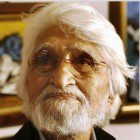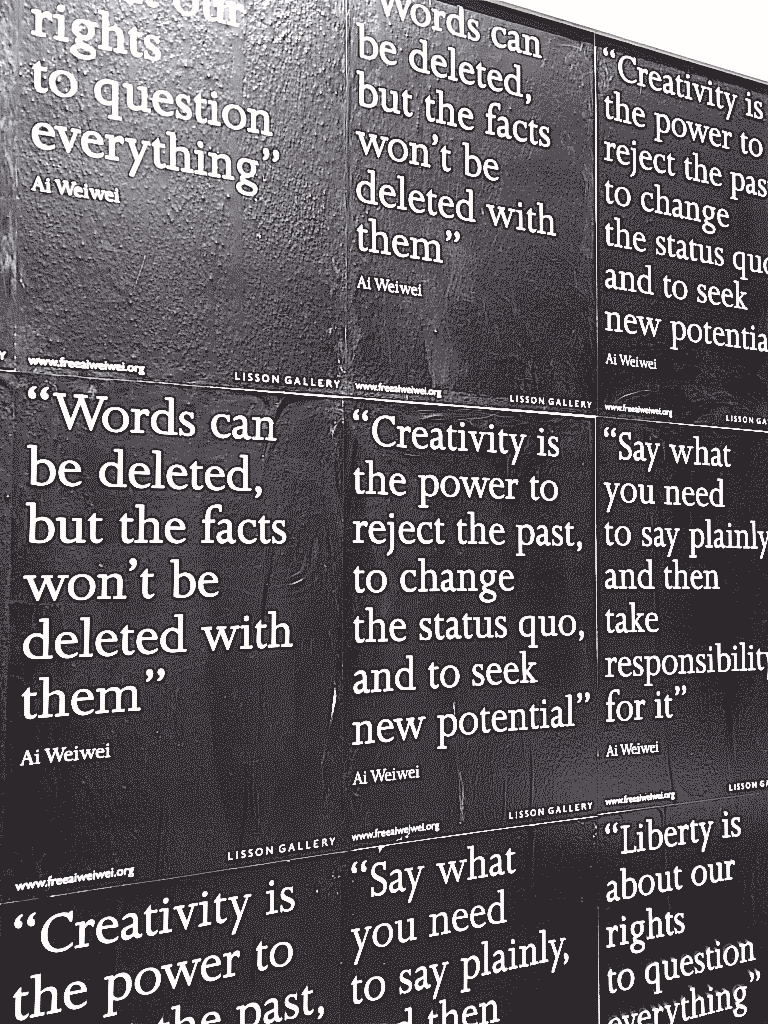23 Jun 2011 | Asia and Pacific, China
After 81 days in detention, the detained Chinese artist Ai Weiwei has finally been allowed to go home. His mother Gao Ying didn’t sleep last night, and his sister Gao Ge told the Guardian that she is “very, very happy”.
While Ai is much skinnier, he has kept his trademark beard – which prisoners would normally have to shave – and his provocative way of talking. Upon Ai’s release (with bail), many media outlets were there waiting to welcome him.
Ai did not speak much in his interviews with the media. “We can sit here in silence together on the phone but we cannot speak a word,” Ai told the FT. His release is in exchange for a more conservative (and quieter) version of himself; it remains to be seen how far the freed Ai Weiwei will assert his right to freedom of expression.
The Western media stationed in Beijing have been quick to get quotes from Ai, but the Chinese media has kept silent except for the official media statement. An extract reads:
BEIJING, June 22 (Xinhua) — The Beijing police department said Wednesday that Ai Weiwei has been released on bail because of his good attitude in confessing his crimes as well as a chronic disease he suffers from. The decision comes also in consideration of the fact that Ai has repeatedly said he is willing to pay the taxes.
It is believed that “chronic illness” refers to diabetes. It’s also widely believed that Ai has “confessed” to crimes of tax evasion. Joshua Rosenzweig, of the human rights foundation Dui Hua, reports on his blog that the coercive measures against Ai have been changed from something called “residential surveillance” to what can only be covered by a Chinese term: qubao houshen.
Qubao houshen allows Ai to live at home and move around freely. However, he must ask permission if he wants to travel abroad. The good news is that qubao houshen is what the authorities sometimes do if they want to discreetly drop a case that is no longer going to be charged. Rosenzweig quotes Professor Jerome Cohen at the US-Asia Law Institute blog:
Qubao houshen (QBHS) is a technique that the public security authorities sometimes use as a face-saving device to end controversial cases that are unwise or unnecessary for them to prosecute. Often in such cases a compromise has been reached in negotiation with the suspect, as apparently it has been here. Of course, we will have to hear what Ai says upon release, recognizing that, as part of the agreement and as a consequence of long incommunicado detention, the released suspect is usually subdued in any public remarks made upon release …
So far, the news of Ai’s release has been welcomed by all sides and was followed by the release of his cousin, Zhang Jinsong, and driver, Hu Mingfen.
Nevertheless, Wen Tao, a freelancer who worked with Ai and Liu Zhenggang, his accountant, remain missing.
9 Jun 2011 | News
 For almost 20 years, artist MF Husain was threatened and his work abused. Salil Tripathi says goodbye to a controversial and spell-binding master (more…)
For almost 20 years, artist MF Husain was threatened and his work abused. Salil Tripathi says goodbye to a controversial and spell-binding master (more…)
9 Jun 2011 | Azerbaijan News, Index Index, minipost
Government officials in Azerbaijan have admitted that the President Ilham Aliyev had a hand in censoring the country’s entries to the Venice Biennale festival. The artwork of Aidan Salakhova included a replica of the Black Stone, a sacred Muslim relic, surrounded by a vagina-shaped marble frame. Aliyev, reportedly asked for several of Salakhov’s pieces to be covered by a black veil because he felt they might be considered “offensive to Islam”. Curators had previously claimed that Salakhov’s pieces were not on display because they had been damaged in transit.
13 May 2011 | News
Artist Ai Weiwei has been missing for 40 days, Leah Borromeo reports from the opening of his new show
Chinese artist Ai Weiwei was detained on 03 April 2011 by the authorities at Beijing Capital Airport preparing to board a scheduled flight to Hong Kong. He has yet to be charged and the state has not yet confirmed his whereabouts.
A major survey show of his work has opened at London’s Lisson Gallery joining his first public installation at Somerset House — “Circle of Animals”. As one of the leading cultural figures of his generation, Ai is a political artist in work and in deed. With work that juxtaposes the antiquity and craft of Chinese culture with modern techniques and multimedia platforms, his work has a voice that resonates through histories.
From a junkyard assemblage of domestic doors made from pristine slabs of marble to Han Dynasty vases covered in bold industrial paint to a marble CCTV camera pointed into the streets of London, the Lisson’s compilation of Weiwei’s work from the past six years shows the activism in his art and the artistry in his activism.
 Wheatpasted on the walls outside the gallery are words from Ai himself:
Wheatpasted on the walls outside the gallery are words from Ai himself:
“Liberty is about our rights to question everything.”
“Say what you need to say plainly and take responsibility for it.”
“Creativity is the power to reject the past, to change the status quo and to seek new potential.”
“Words can be deleted, but the facts won’t be deleted with them.”
The Lisson’s founder and director Nicholas Logsdail argues that Weiwei’s work “has become politicised because of his position. The genius lies in politically gentle forms that are open to interpretation — only when you look into what constitutes the work can you see he’s rebaptised antiquity with a message.”
In the days of the Young British Artists, established galleries like the Lisson and larger institutions like Tate and the Guggenheim were depoliticised. Should political art be shown it was obfuscated beneath layers of visual rhetoric or in historical retrospectives where the immediacy of the message passed its dateline. Thanks to Ai Weiwei and his disappearance at the hands of his own state, an art world already politicised by funding cuts is speaking out. We’ve all become agit-prop. Tate Modern stencilled “Free Ai Weiwei” across the top of its building. Anish Kapoor dedicated his Leviathan sculpture in Paris to Ai Weiwei. Bob and Roberta Smith held a reading of names to remind people that dozens of other artists, writers, and supporters of free expression have either been detained or gone missing at the hands of the Chinese. The Guggenheim has launched an online petition for his release and the Lisson is inviting all visitors to its show to be photographed with a “Free Ai Weiwei” placard that will be broadcast on the internet. There is no scope to be subtle when freedom is at stake.
Greg Hilty, the Lisson’s curatorial director, said that after Weiwei’s disappearance there was “no question” of whether to continue with the show. “Ai Weiwei consistently places himself at great risk for his art. We are showing that his art and activism goes beyond China. He’s an example for social criticism and free expression around the world. To Weiwei, there are no sacred cows.”
Logsdail says: “If you don’t support Ai Weiwei, you’re mental. Freedom to express yourself is what it means to be an artist.”
Believing in total transparency, truth and openness in a society obsessed with micromanaging the lives of its 1.3billion inhabitants is a problem for Ai Weiwei. China’s schizophrenic relationship with maintaining repressive regime structures whilst successfully engaging with a free market economy are themes that Weiwei’s work show. A compulsive communicator, his Twitter account logged the artist’s candid thoughts and movements. His belief is that if you have nothing to hide, you have nothing to spy on.
A documentary about Ai by Alison Klayman asks “Can an artist change China?”. Not just an artist, this artist. An artist that photographed himself flashing his middle finger at Tiananmen Square. An artist whose studio was trashed by Chinese authorities and beaten when he investigated the deaths of schoolchildren in post-earthquake Sichuan. An artist with a voice and a worldwide audience that China is scared of.
Ai Weiwei is not a revolutionary. He is an artist who shows us what it is to be human by example. He is the bridge between China’s past and its future.
www.freeaiweiwei.org
www.lissongallery.com


